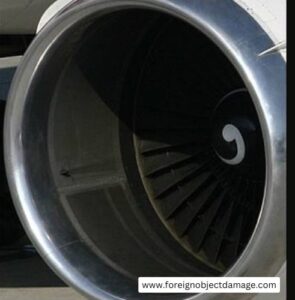 FOD foreign object damage is a crucial aspect of the aerospace and aviation industry. It focuses on foreign objects that appear where they should not. Such debris has even been responsible for unfortunate fatalities over the years and is the major source of billions of dollars in annual damage to helicopters and airplanes throughout the world.
FOD foreign object damage is a crucial aspect of the aerospace and aviation industry. It focuses on foreign objects that appear where they should not. Such debris has even been responsible for unfortunate fatalities over the years and is the major source of billions of dollars in annual damage to helicopters and airplanes throughout the world.
Fortunately, foreign object damage in aviation has received significant attention after numerous kinds of research that spanned several decades. Anyone who works with airplanes is regularly instructed to increase their awareness of looking for F.O.D., identifying its source, and most importantly, learning how to reduce FOD. Each year, thousands of businesses develop, maintain, and enhance FOD prevention programs.
FOD foreign object damage – where are they usually found?
The majority of foreign object damage in aviation that is discovered in airport apron areas, service roads, baggage areas, and locations close to the aircraft galley typically results from aircraft servicing operations. Airport management must take action to keep these areas clean to prevent any unintended occurrences brought on by these FODs.
The management of the airport must also establish a program for inspecting Ground Servicing Equipment (GSE) for any symptoms of wear and tear that could pose a FOD threat. Additionally, the management should adhere to stringent processes to perform checking at the baggage loading and unloading areas each time an aircraft is serviced to limit the amount of FOD found in the baggage area.
All spare parts, such as nuts, bolts, washers, and safety wires, need to be managed and disposed of properly for aviation maintenance tasks. The same procedure is followed while using hand tools for repairs. All maintenance tasks must be completed before those things can be checked and returned to their original locations. To protect lost belongings, they must also be put in an appropriate toolbox or proof tote bag. Shadow boards, cut-out tool tray liners, and checklists are some of the techniques utilized to aid in this process of keeping track of all the spare parts and hand tools.
The asphalt and concrete pavements in airports are additional sources of FOD foreign object damage. The airport administration must establish significant resources for pavement maintenance, such as pavement inspection and FOD oversight, to implement successful pavement maintenance methods. The safety of aircraft operations depends heavily on effective FOD management on airfield pavement.
When it’s windy outside, materials like plastic and cargo strapping are easily blown around and present a FOD risk in air cargo facilities. In this situation, airport management should set up appropriate procedures for collecting the FOD, perhaps by installing fences in the appropriate location. The blowing debris was confined by the fences. Therefore it needs to be constantly cleared away to prevent FOD from returning to the air cargo area.
Conclusion
Foreign Object Debris (FOD) can have a considerable impact on maintenance expenses. Effective protocols and the use of a Safety Management System can be used to successfully avoid FOD. An essential component of human factors in ensuring a FOD-free environment is safety culture. It has to do with how people act and think within a company.
All responsibilities and processes connected to FOD prevention can be clearly defined through a strong safety culture. It will increase safety and reduce catastrophes in the aviation industry.
